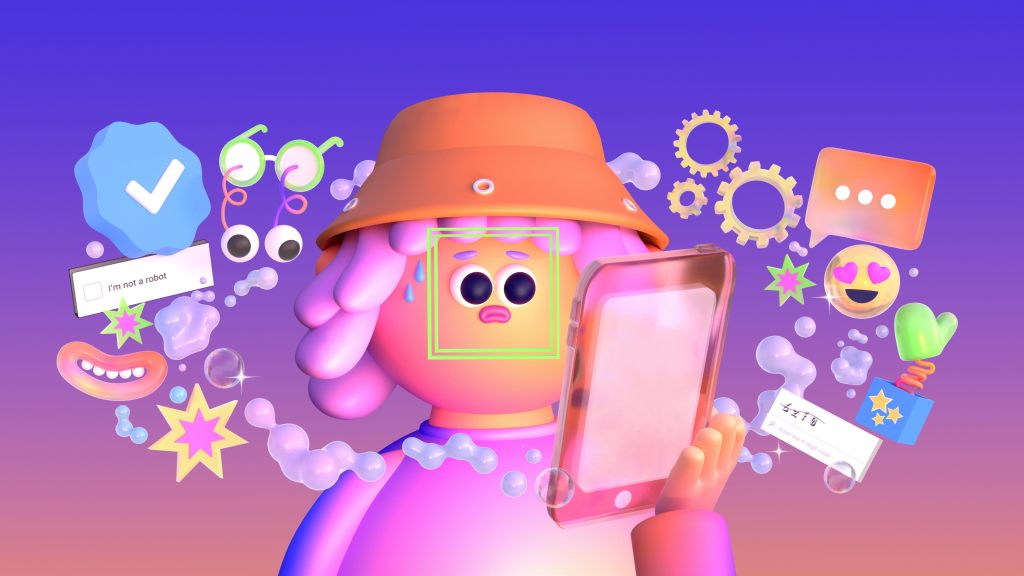Two very weird, seemingly connected things happened on the internet yesterday. First, MTV revealed its Tumblr-tastic rebrand featuring cheesy 1990s computer graphics. And then, Tumblr launched Tumblr TV, a web viewer for GIFs with an explicitly 90s MTV-style visual spin. Basically, Tumblr became MTV, and MTV became Tumblr.
MTV and Tumblr’s coinciding rebrands are not merely a case of star-crossed #brands. This, I propose, is a significant moment in internet culture. There’s a distinct sense that we are through the looking glass here: in one fell swoop, both Tumblr and MTV have erased the cynical distance inherent in the digitally-bred aesthetics they champion. And they did this completely separately.
Videos by VICE
How did we get here? To understand, we have to take a look at the aesthetics that animate both Tumblr TV and MTV’s rebrand. Of chief importance here, I would argue, is vaporwave, an internet-born genre of music and a visual aesthetic that mashes up pop and corporate culture detritus.
But first: here’s a quick breakdown of how Tumblr TV works: the viewer takes GIFs from around Tumblr and streams them in one place. The result is a hallucinogenic succession of anime, saturated VHS artifacts, and TV show clips. You can filter the stream by tags, or by specific blogs. If you like what you see, you can click through the GIF to see the blog it came from.
Beyond functionality, Tumblr TV’s non-internet aesthetic referents are what make it really interesting. The feature has a distinctly retro package, one that evokes TV colour bars and white noise, as well as MTV’s own neon 80s and 90s branding. Tumblr TV’s logo is Tumblr’s lowercase “t” logo accompanied by a small, askew “v.”
Vaporwave began as a somewhat amorphous visual and aural aesthetic championed by just a few internet-based music producers like Saint Pepsi—who now goes by Skylar Spence—and INTERNET CLUB, among others. Since then, it’s spiralled out to include dozens upon dozens of artists, if not more. The music co-opts and reimagines the shimmering sounds of corporate lounge music; slowing it down, looping it, and turning it into something alternately sweet or dystopian.
The overall effect was described by Wes Ables, founder of vaporwave-associated tape label Illuminated Paths, as “being in a memory cave.” The visual aesthetic of vaporwave achieves this same vibe by recombining and reimagining corporate and consumer products. Logos, primitive 3D “net art,” TV shows, movies, and video games have all been turned into a cough syrup-fueled visual smorgasbord and subsumed by vaporwave.
Since vaporwave fucks around with corporate culture detritus so completely, it’s often been seen as a critique of its source material.
Music critic Adam Harper, writing in Dummy in 2012, described vaporwave artists’ work as a reaction to late capitalism thusly: “These musicians can be read as sarcastic anti-capitalists revealing the lies and slippages of modern techno-culture and its representations, or as its willing facilitators, shivering with delight upon each new wave of delicious sound.”
While vaporwave wasn’t and isn’t confined to Tumblr, it did thrive there, along with similarly nostalgic, corporate, and recombinatory aesthetics like seapunk. What is important to note is the distance that these aesthetics create between their source material and the works that eventually come from them. You could, conceivably and perhaps even easily in some instances, read vaporwave as critical of the commercial context its source material emerges from.
But take a look at what MTV’s done with the aesthetic. All the key signifiers of vaporwave, seapunk, and the generally ironic and half-cynical visual blend that characterizes these genres is there. Puke green “LOLs” float alongside terribly rendered CGI torsos. The slogan reads, “I AM MY MTV.”

Image: ▓▒░ TORLEY ░▒▓
A cheeky saying like that is right at home within the trappings of vaporwave. In the context of the genre, the move from “I want” to “I am” with regards to corporate identity is playful, at the very least, and has the potential to reach over into the realm of critique. But you don’t mean it, really. MTV’s adoption of those words—an evolution of MTV’s previous slogan, “I want my MTV,”—now poses the question: how sure are you that you don’t mean it, really?
Vaporwave always toed that delicate line, but MTV may have just dragged it over the precipice. And this is where the genre’s holy boundary is crossed. This is where the cynical impulse that animated vaporwave and its associated Tumblr-based aesthetics is co-opted and erased on both sides—where its source material originates, and where it lives.
All of this leads us to yet another question: is vaporwave officially over?



